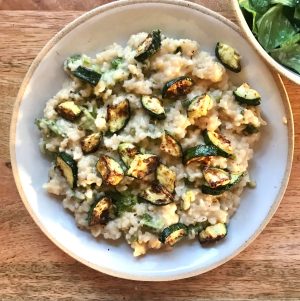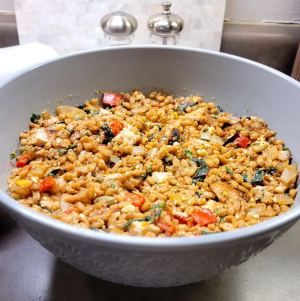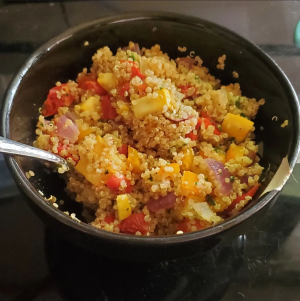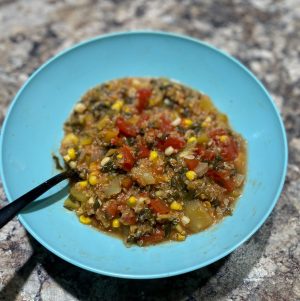A great weeknight dinner is tasty, filling, and can be quickly pulled together with ingredients you already have on hand. Grain bowls easily meet these needs! This classic is one of our favorite no-recipe recipes because it can be created with an array of produce, grains, and whatever sauces or toppings you fancy. These handsome grain bowl photos submitted during the Seed to Supper Challenge (shown below) inspired us to share some of our favorite tips and tricks that’ll help make the grains, produce, sauces, and toppings in your next grain bowl extra scrumptious and nutritionally loaded.
Gorgeous Grain Ideas
The foundation of your grain bowl is grains, of course! It could be quinoa, rice, brown rice, lentils, or any other combination of grains you have stashed in your pantry. One of our favorite things is to combine leftover plain rice with a fresh pot of quinoa. The texture and taste of this grain mixture work together nicely and can help cut back on your food waste by giving your leftovers a second life. Another great way to make your dish extra tasty is by adding flavor enhancers to your cooking liquid when preparing your grains. For example, try adding lemon or lime juice to your cooking water, or you can swap out water altogether for broth instead. Finding creative ways to flavor each element of your grain bowl will help improve the dish’s overall taste!
Produce Prep
There are almost limitless possibilities for the produce combinations, seasoning blends, and cooking techniques you can implement in your grain bowl. A good guideline to consider when deciding on produce preparation is to use flavors and textures that contrast but complement one another. For example, if you plan on using a sweet vegetable like sweet corn, pair it with something sour like a quick pickled onion to balance the flavors. Or, if you’re sauteing a tender green like spinach, try coupling it with a crunchy, roasted starch to add a variety of textures to your dish. Additionally, if you’re preparing any starchy vegetables for your bowl – like potatoes, sweet potatoes, and corn- you can shorten your cooking time by washing them, lightly piercing them a few times with a fork or knife, and popping them in the microwave. Another timesaver is to reuse leftover vegetables from past dinners. Not only will it save you time, but it will also help reduce potential food waste.
Sauces, Toppings, and Flavor Profiles
Once your grain and veggies are ready, the only thing left is the addition of sauce and toppings to put it all together! Your sauce can be as simple as store-bought salsa, your favorite pre-made salad dressing, or even hummus straight from the container. If you have the gumption, homemade pesto, garlic tahini dressing, or peanut sauce could also make a great accompaniment to your dish. One of the grain bowl sauces we love is a dollop of homemade honey mustard. It is tangy, sort of sweet, and pairs well with a variety of grains and veggies. Depending on the sauce you choose, you can add toppings like cheese, chopped nuts, tomato confit, or something protein-rich such as beans or chicken. Another honorable addition to your bowl would be adding a healthy fat like diced avocado or feta cheese. Based on your grain, produce, sauce, and topping choices, your bowl can take on a variety of flavor profiles. Some possible combinations include:
- Mediterranean hummus bowl: farro, diced cucumber, blistered cherry tomatoes, sauteed kale, feta, black olives, and hummus.
- Southwestern-style bowl: quinoa, fresh salsa, roasted corn, roasted sweet potatoes, and cheddar cheese.
- Asian-inspired bowl: brown rice, sesame roasted broccoli, pickled radishes, pan-fried bok choy, hard-boiled eggs, and stir-fry sauce.
Ultimately, whether you are dreaming up meals with a fresh farm box bounty or you are trying to figure out what to do with the residual produce hanging out in the back of your fridge, your grain bowl is sure to be tasty. Go forth, get creative, and go make a grain bowl!
Written by Julia Dolores and edited by Frankie Conti




